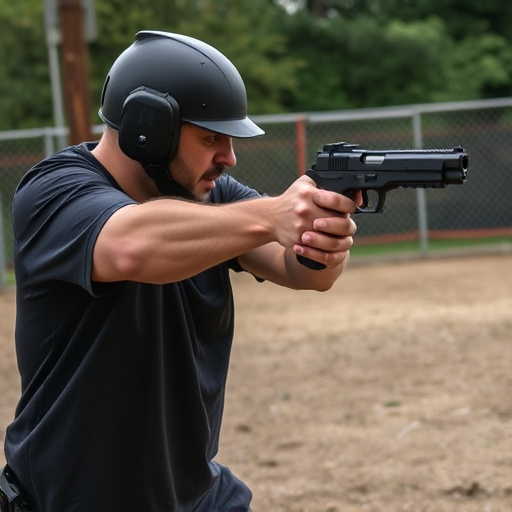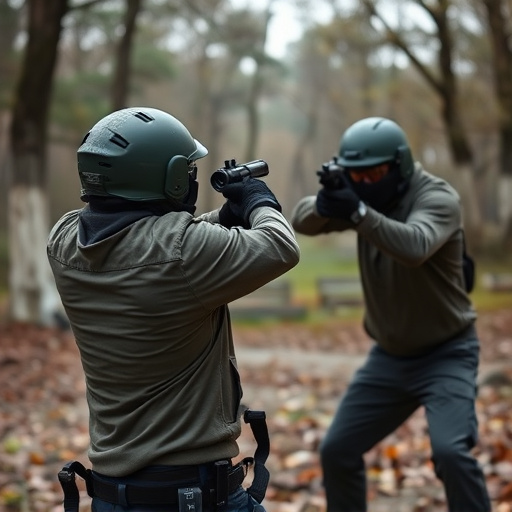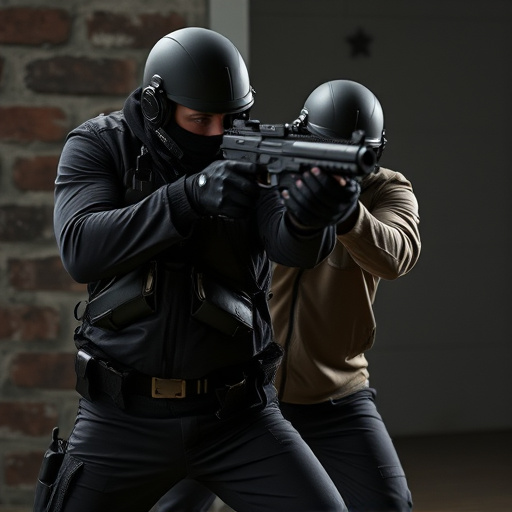Advanced stun gun detection technologies are necessary due to the growing availability of affordable, non-metallic stun guns for self-defense. These innovations include RFID, biometric identification, thermal scanning, and 3D body scanners, aiming to improve reliability and accuracy in identifying concealed weapons. While metal detectors and advanced scanners offer effective security solutions, especially in high-risk areas like airports and courts, debates around privacy, access, and misuse persist with the proliferation of affordable stun guns. Balancing personal safety and individual freedoms requires continuous policy adjustments in response to evolving self-defense weapon accessibility.
In today’s world, self-defense is a paramount concern, driving demand for concealed stun gun protection. While technologies like metal detectors offer some reassurance, their effectiveness in identifying hidden stun guns remains challenging. This article delves into the intricacies of stun gun detection, exploring advanced scanners and affordable self-defense options. We examine legal implications, privacy concerns, and practical considerations for individuals seeking effective personal safety solutions. Understanding these challenges is crucial for navigating a complex landscape of personal security.
- Understanding Stun Gun Detection Technologies
- Challenges in Concealed Carry Weapon Detection
- The Role of Metal Detectors and Advanced Scanners
- Affordable Self-Defense Options: Features and Considerations
- Legal Implications and Privacy Concerns
Understanding Stun Gun Detection Technologies

Stun gun detection technologies have evolved significantly, but understanding how they work is crucial in addressing concerns surrounding concealed stun gun use. These systems employ a range of methods to identify and differentiate between stun guns and other similar devices. One common approach involves detecting electrical signatures or electromagnetic fields (EMFs) emitted by stun guns when activated. Since affordable stun guns for self-defense often operate on simple electrical circuits, they can trigger these sensors, raising concerns about false positives in security settings.
However, advanced detection technologies are also available, utilizing more sophisticated techniques like radio frequency identification (RFID) or biometric signatures to distinguish between authorized and unauthorized stun gun use. These methods aim to reduce false alarms and enhance the reliability of the detection systems, particularly in high-risk environments.
Challenges in Concealed Carry Weapon Detection

The detection of concealed weapons, especially stun guns, presents unique challenges in security and law enforcement. Traditional metal detectors are often ineffective against non-metallic objects like plastic or composite materials commonly used in modern stun guns. This is a growing concern, given the increasing availability of affordable stun guns for self-defense, which can be easily hidden on individuals. Additionally, many stun devices lack distinct shapes or metallic components, making them nearly indistinguishable from everyday items, further complicating their detection.
Security protocols and technologies are continually evolving to keep pace with these developments. Advanced imaging techniques, such as thermal scanning and 3D body scanners, offer promising solutions. These tools can detect heat signatures or unusual contours under clothing, potentially identifying concealed weapons. However, the effectiveness of these methods still varies, and ongoing research is dedicated to enhancing their accuracy and accessibility, particularly in cost-effective forms suitable for widespread adoption.
The Role of Metal Detectors and Advanced Scanners

Metal detectors and advanced scanners play a pivotal role in enhancing security measures, especially in high-risk areas where concealed weapons might be present. These devices are crucial tools for detecting not only traditional metal objects but also modern gadgets designed for covert carrying, including stun guns. With the availability of affordable self-defense options like stun guns, ensuring their effective detection has become increasingly important to maintain safety in public spaces.
Advanced scanners utilize cutting-edge technology, such as ion detection and image scanning, to identify hidden items. These tools are particularly useful in airports, courts, and other sensitive locations where individuals might attempt to bring concealed weapons. By integrating metal detectors and advanced scanners into security protocols, authorities can efficiently screen visitors, deterring potential criminals and ensuring the safety of those in their charge, especially when considering the accessibility of affordable stun guns for self-defense.
Affordable Self-Defense Options: Features and Considerations

When it comes to affordable self-defense options, stun guns have emerged as a popular choice among those seeking effective personal protection. These devices offer a non-lethal way to deter and disable attackers, making them an attractive option for individuals who prioritize safety without the need for lethal force. Among various models available in the market, affordable stun guns are designed with key features that cater to different needs and preferences.
One of the primary considerations when choosing an affordable stun gun is its power output, measured in joules. Higher joule ratings indicate greater stun capability, ensuring a more effective response against potential threats. Additionally, factors like weight, size, and ease of use play significant roles. Smaller, lightweight models are often preferred for convenience and discreet carry, while some users prioritize durable construction to withstand rugged conditions. Features such as LED flashlights integrated into the stun gun can offer extra versatility during low-light situations, making them practical choices for everyday self-defense considerations.
Legal Implications and Privacy Concerns

The legal implications surrounding concealed stun gun detection are complex and vary significantly across jurisdictions. In many regions, owning and carrying a stun gun for self-defense is legal, provided it complies with local regulations regarding size, power output, and permit requirements. However, the ability to detect these devices raises concerns about potential misuse and unintended consequences. Law enforcement agencies often have specialized equipment to identify stun guns, but private citizens lack access to such technology, leading to privacy issues.
The proliferation of affordable stun guns for self-defense has sparked debates about personal safety versus security state fears. As these weapons become more accessible, ensuring their responsible use becomes critical. Privacy advocates argue that widespread detection methods could create an atmosphere of surveillance, infringing on individual freedoms. On the other hand, supporters of stringent measures believe it’s necessary to prevent crimes and ensure public safety. Balancing self-defense rights with privacy concerns is a delicate task that requires ongoing dialogue and thoughtful policy-making.
In light of the above discussions, it’s clear that while concealed stun gun detection technologies aim to enhance safety, challenges remain. Metal detectors and advanced scanners, though effective, face limitations in identifying non-metallic stun guns. Affordable self-defense options, when considered alongside legal implications and privacy concerns, offer a balance between personal protection and public security. As technology evolves, ongoing dialogue and accessible, cost-effective solutions are crucial to addressing these detection challenges effectively.
